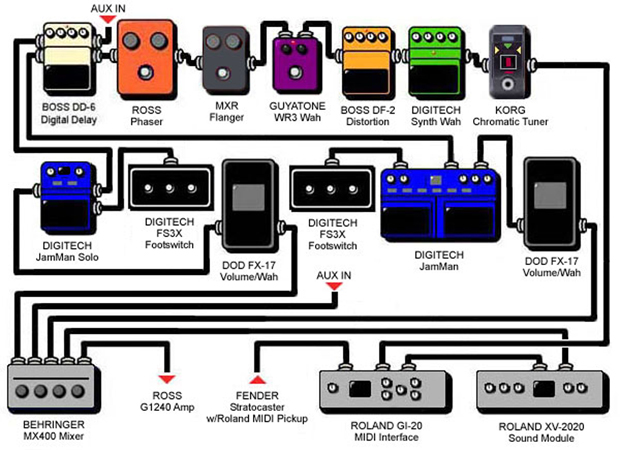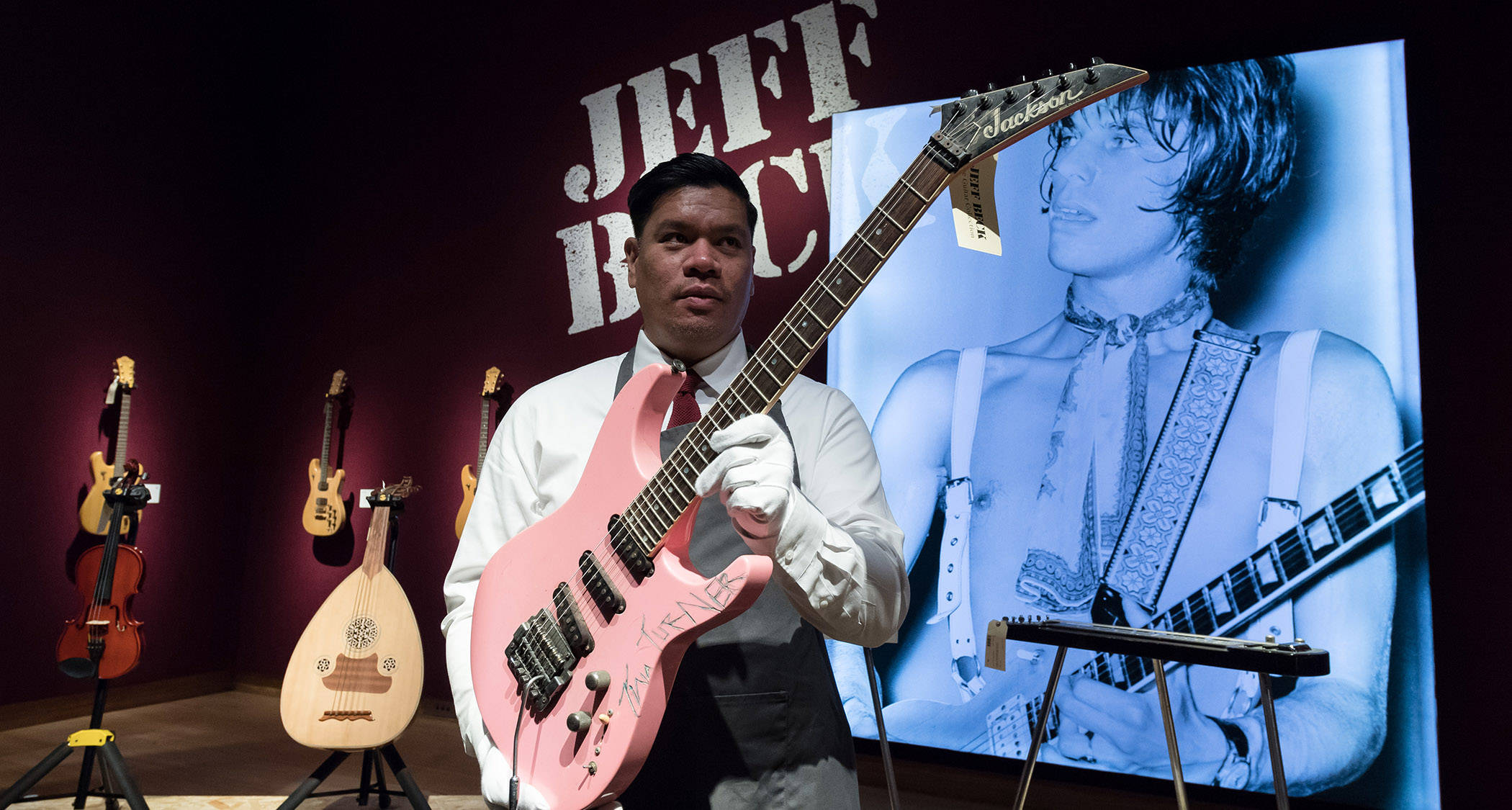Session Guitar: How to Create Different Effects Chains

As promised, this week I'd like to move onto a continuation of last week's blog on effects.
Previously I discussed some of the most commonly used FX in the studio. This week we are going to look at combining these into what we call a chain.
The main concept is simple: Combine two or more effects to create a new sound or to enhance one of the sounds. It's almost like cooking. Creating a new flavor. How to do it requires some thought. Even though there are no rules, there is a mental process that should take place before creating the chain. Just remember to start your thought pattern with these simple words: "Do I want to ... ?"
Now watch how it works. Do I want to phase the distortion? In this case, the guitar gets plugged into the distortion, creating a distorted sound first; then the output of the distortion gets plugged into the phase shifter. Then obviously into the amp. Another example: Do I want to put a slow flange on a fast phaser and compress it? See what I mean?
Now I know there are some live, very expensive rigs being used to handle the myriad of effects all guitarists seem to require. Some of these are showing up in the studio. However, I'm not going to be dealing in the world of superstar budgets. Old school does not mean lacking in creativity. Most of you have pedals lying around. And you have given some thought (I hope) into how to put them in order. But when you are recording, there are no rules.
There are a few more creative words to use that usually wind up creating some of the most unfortunate sounds that you may love or hate! Instead of starting your thought with "Do I want to ...," start it with, "What if I ...?" So maybe you might say, "What if I wah my ring modulator and then put a distortion on it? I have. Just make sure there are no humans around who are sensitive to sound if you do!
Before I get into a few fun chains, I'd also like to remind you that most amps have reverb and an effects loop. These can also be used when you are creating sounds. Some effects work better through the effects loop. That seems to be a personal decision. I will leave it up to you to try. But there is a distinct difference. Many prefer to plug their all in one Line 6, Vox or whatever multi-FX device through the loop. I've had success both ways. Use your ears!
All the latest guitar news, interviews, lessons, reviews, deals and more, direct to your inbox!
Here are some of my favorite effects chains:
1. Guitar-Compressor-Flange-Delay: In this order, I am compressing my clean guitar, adding a light slow flange and then adding a slight delay in tempo to the song.
2. Guitar-Trem or Rotary-Slight Phase and Heavy Reverb: Another clean sound with a retro vibe.
3. Guitar-Fuzz-Octave-Wah-Delay: This is pretty juicy for a solo. I prefer a lower octave, but an upper octave might be what you like. And I ride the wah like a tone control. The tone goes from deep to nasal to trebly at my foot's command.
4. Guitar-Overdrive-Distortion-Delay: Now here's something interesting. Two distortion boxes. The first one just slightly overdrives the sound, then the second one really is set to kill. I always like a little depth when I play, so it is not uncommon that a delay or reverb is used, even slightly.
5. Guitar-Trem-Delay-Flange with Distortion coming from the amp: The Trem is not set too hard or fast, but just enough to make you uncomfortable by NOT being in time with the song. The delay is set with many repeats, and long. The flange is set deep and slow. This effect is VERY atmospheric and creepy, depending on the notes you are playing.
I have also been known to use my multi-effects-all-in-one-superstore famous pedal board and use a different one of another brand and setup two separate chains and play simultaneously through both and record the signal on two separate tracks! Pan hard left and right, and off ya go!
I hope this blog post gave you some inspiration to experiment with effects to see what signature sound you can come up with! Let me know if you find anything new and great sounding ... or disgusting! It's all a beautiful noise!
- Till next time…
- Ron Zabrocki
Ron Zabrocki on Ron Zabrocki: I’m a session guitarist from New York, now living in Connecticut. I started playing at age 6, sight reading right off the bat. That’s how I was taught, so I just believed everyone started that way! I could pretty much sight read anything within a few years, and that aided me in becoming a session guy later in life. I took lessons from anyone I could and was fortunate enough to have some wonderful instructors, including John Scofield, Joe Pass and Alan DeMausse. I’ve played many jingle sessions, and even now I not only play them but have written a few. I’ve “ghosted” for a few people that shall remain nameless, but they get the credit and I got the money! I’ve played sessions in every style, from pop to jazz.
